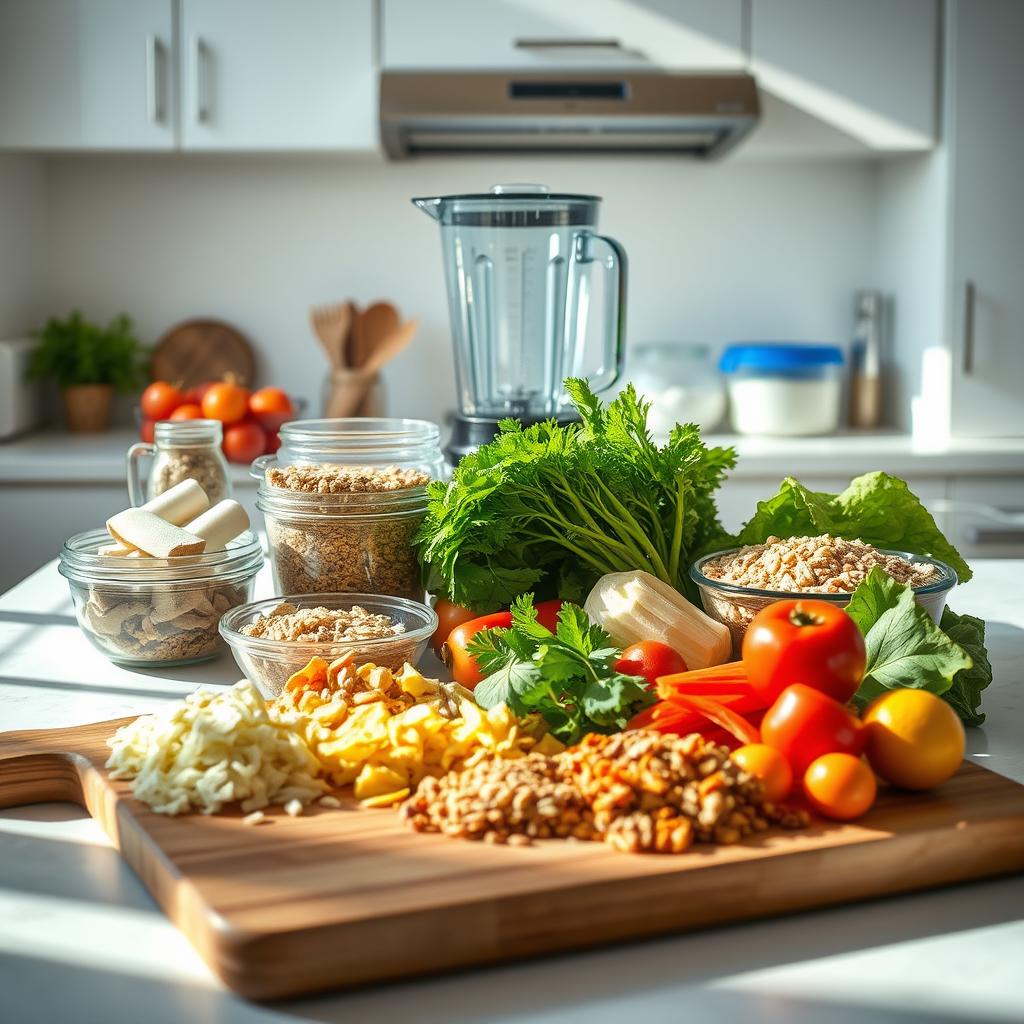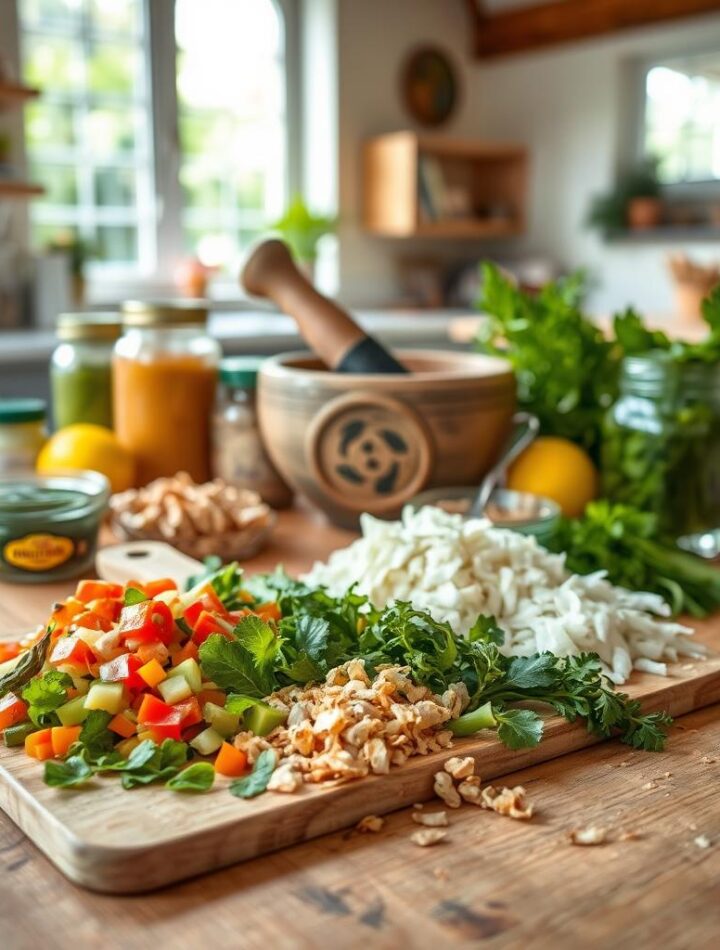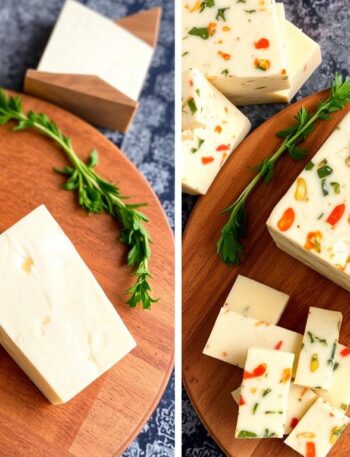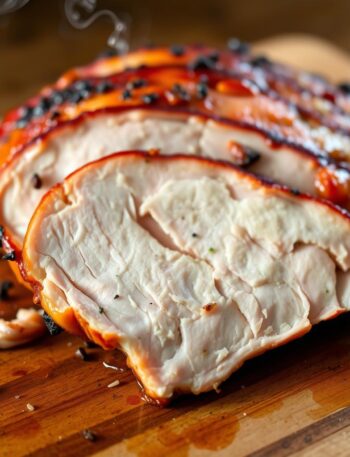Making homemade fish food is easy and saves money. It lets you tailor your pets’ diet to their needs. Many hobbyists choose to make their own fish food recipes over store-bought options.
By making fish food at home, you pick the ingredients. This means no harmful additives and a balanced diet for your pets. It’s good for them and your wallet too.
Key Takeaways
- Homemade fish food allows for control over ingredients and nutrients.
- Creating your own fish food recipe can be cost-effective.
- Avoid additives and provide a balanced diet for your aquatic pets.
- Tailor the diet to your pets’ specific needs.
- Save money by making fish food at home.
Why Homemade Fish Food Is Better for Your Aquatic Pets
Making fish food at home lets aquarium owners give their pets a healthy diet. They avoid additives and preservatives found in many commercial foods. This simple step can greatly improve your aquatic pets’ health and happiness.
Control Over Ingredients and Quality
Homemade fish food gives you control over what goes into it. You can pick fresh, nutrient-rich ingredients. This way, you can make sure your fish get the nutrients they need to stay healthy and full of energy.
- Choose fresh and nutrient-rich ingredients.
- Avoid fillers and by-products common in commercial fish foods.
- Tailor the diet to the specific needs of your fish species.
Cost-Effectiveness of DIY Fish Food
Homemade fish food is also a smart choice for your wallet. It’s great for those with many aquariums or big fish tanks. Buying ingredients in bulk and making food in big batches can save you money. Plus, you skip the high prices of brand-name fish foods.

- Bulk purchasing reduces costs.
- Homemade fish food can be made in large batches, saving time.
- Avoiding brand-name premiums can lower expenses.
Understanding Fish Nutritional Needs
It’s important to know what your fish need to stay healthy. They need a diet full of proteins, vitamins, and minerals. This mix helps them grow and thrive.

Essential Proteins for Fish Health
Proteins are key for fish health. They help with growth and keeping the body working right. High-quality protein sources like fish meal and spirulina are vital. They help with growth, repair, and energy.
Important Vitamins and Minerals
Vitamins and minerals are also crucial for fish. Vitamins C and D and minerals like calcium are important. They help with healthy bones, scales, and keeping the immune system strong. Without them, fish can get sick or grow poorly.
Dietary Requirements for Different Fish Species
Each fish species has its own diet needs. Carnivorous fish like cichlids need lots of protein. Herbivorous fish, like plecos, need more plants. Knowing these needs helps you make the right homemade fish food.
Gathering the Right Ingredients
Making homemade fish food needs careful thought about the ingredients. The quality and variety of these ingredients affect the nutritional value. You’ll need a mix of protein sources, vegetables, and supplements for a balanced diet.
Protein Sources for Fish Food
Protein is key in fish food. You can choose from animal or plant-based sources, based on your fish’s needs.
Fish and Seafood Options
Fish and seafood are great for protein in fish food. Use fish like salmon or seafood like shrimp for essential amino acids and nutrients.
“Fish need a diet rich in protein to do well,” says Dr. James Findlay, a renowned aquaculture expert.
“The nutritional needs of fish vary by species, size, and life stage.”
Plant-Based Protein Alternatives
For a varied diet, plant-based proteins are good. Spirulina, peas, and soybeans offer a balanced amino acid profile.

Vegetable Components to Include
Vegetables add fiber, vitamins, and minerals to fish food. Sweet potatoes, carrots, and zucchini are good choices. They help with digestion and overall health.
Supplements and Additives
Supplements and additives can boost your fish food’s nutrition. Vitamins, minerals, or probiotics support immune function and health. Always use them as directed to avoid over-supplementation.
Essential Equipment for Making Fish Food
To make nutritious fish food at home, you’ll need some basic kitchen tools and maybe some specialized equipment. Having the right tools makes the process easier and ensures the quality of your fish food.
Basic Kitchen Tools You’ll Need
You probably already have most of what you need in your kitchen. A food processor or blender is key for grinding ingredients finely. You’ll also need a mixing bowl to mix everything together and measuring cups and spoons for accurate amounts. A spatula or spoon is handy for mixing the ingredients.
Optional Specialized Equipment
For more advanced fish food, think about getting a pellet mill or extruder to make uniform pellets. A freeze dryer is also useful for preserving ingredients or making specific types of fish food. While not necessary, these tools can improve the quality and variety of your homemade fish food.
Basic Fish Food Recipe for Beginners
Making your own fish food is key for feeding your fish well. It lets you pick the ingredients and make sure they get a balanced diet.
Ingredient List and Proportions
To make simple fish food, you need:
- 1 cup of fish fillet (such as cod or tilapia)
- 1/2 cup of cooked vegetables (like spinach or peas)
- 1/4 cup of gelatin
- 1 tablespoon of fish oil
- 1 teaspoon of vitamin mix
These ingredients give your fish the proteins, vitamins, and minerals they need to stay healthy.
Step-by-Step Preparation Process
To make the fish food, follow these steps:
- Blend the fish fillet and cooked vegetables in a food processor until smooth.
- In a separate bowl, dissolve the gelatin in water.
- Combine the blended fish mixture, gelatin mixture, fish oil, and vitamin mix in a bowl.
- Pour the mixture into an ice cube tray and freeze until solid.
Consistency and Texture Guidelines
The finished food should be firm, like a gel. If it’s too soft, add more gelatin. Getting the right texture is important so the food doesn’t fall apart quickly in water.
Aquatic experts say the food should be firm enough to last hours in water without breaking.
| Texture | Consistency | Adjustment |
|---|---|---|
| Too Soft | Disintegrates quickly | Add more gelatin |
| Firm | Lasts several hours | No adjustment needed |
| Too Hard | Doesn’t dissolve | Reduce gelatin |
“The quality of the ingredients directly affects the nutritional value of the homemade fish food.”
Advanced Fish Food Recipes for Specific Fish Types
Creating special fish food can make your fish healthier and live longer. Each fish type needs different food, and making your own recipes can meet those needs.
Customized nutrition is crucial for your fish’s health. Knowing what your fish need, you can make food that boosts their health and energy.
Tropical Fish Food Recipe
Tropical fish, like tetras and guppies, need lots of protein and vitamins. A good recipe for them includes spirulina, fish meal, and veggies like spinach and zucchini.
To make it, mix 2 parts fish meal, 1 part spirulina, and 1 part chopped veggies. Use a bit of water to hold it together, then shape into small pellets.
Goldfish and Koi Food Recipe
Goldfish and koi need food rich in carbs and fiber. A good mix includes wheat germ, peas, carrots, and fish meal.
Start with 2 parts wheat germ, 1 part peas and carrots, and 1 part fish meal. Add a bit of water to stick it together, then shape into pellets or sticks.
Betta Fish Food Recipe
Betta fish are meat-eaters and need lots of protein. A recipe for them should have fish meal, shrimp meal, and bloodworms. It’s important to give them a varied diet for all nutrients.
For betta fish, mix 3 parts fish meal, 1 part shrimp meal, and 1 part freeze-dried bloodworms. Shape it into small pieces that your betta can easily eat.
By using these advanced fish food recipes, you can give your fish a diet that’s just right for them. This helps them stay healthy and happy.
How to Store Homemade Fish Food Properly
Keeping homemade fish food fresh is key. It’s important to store it right to keep its nutritional value. This way, your fish get the best food.
Refrigeration Methods
Refrigeration is good for short-term storage. Use airtight containers to keep moisture out. Label them with the date and what’s inside. Use the food within a few days.
Best Practices for Refrigeration:
- Store in airtight containers
- Keep at a consistent refrigerator temperature below 40°F (4°C)
- Use within 3-4 days
Freezing Techniques for Longer Shelf Life
Freezing is great for longer storage. Divide the food into portions and freeze them. Use a baking sheet lined with parchment paper. Once frozen, put them in airtight bags or containers.
- Portion control for easier thawing
- Label bags with date and contents
- Store at 0°F (-18°C) or below
Signs Your Fish Food Has Gone Bad
Watch for signs of spoilage in stored fish food. Look for mold, bad smells, or sliminess. If you see these, throw the food away to protect your fish.
| Signs of Spoilage | Description |
|---|---|
| Visible Mold | Fuzzy or cottony growth on the surface |
| Off-Odors | Unpleasant, sour, or ammonia-like smell |
| Sliminess | Soft, mushy, or slimy texture |
Feeding Guidelines and Best Practices
To keep your fish healthy and thriving, it’s essential to follow established feeding guidelines. Proper feeding practices not only ensure the well-being of your aquatic pets but also maintain the quality of your aquarium environment.
Proper Portion Sizes
Determining the right portion size is critical. A general rule is to feed your fish an amount that they can consume within 1-2 minutes. Overfeeding can lead to water quality issues and negatively impact fish health.
Feeding Frequency Recommendations
Feeding frequency varies depending on the fish species and their dietary needs. Most aquarium fish do well with 2-3 small meals a day. Some species, like goldfish, may require less frequent feeding, while others, such as betta fish, may need more frequent, smaller meals.
| Fish Type | Feeding Frequency | Portion Size |
|---|---|---|
| Goldfish | 2 times a day | Small pinch |
| Betta Fish | 3-4 times a day | Very small amount |
| Tropical Fish | 2-3 times a day | Moderate amount |
Avoiding Overfeeding Problems
Overfeeding is a common issue that can lead to poor water quality and stress on your fish. Monitor your fish during feeding, and remove any uneaten food after a few minutes to prevent overfeeding. Regular water changes and monitoring water parameters will also help maintain a healthy aquarium environment.
Troubleshooting Common Issues with Homemade Fish Food
Making homemade fish food can be tricky. You might face problems like food breaking down too fast, fish not eating it, or it lacking nutrients.
Food Disintegrating Too Quickly in Water
One big problem is when food breaks down too quickly in water. This can harm water quality and stress your fish. To fix this, try changing the binding agents in your recipe. Gelatin or agar can make the food last longer.
Also, don’t overmix the food. This helps it stay together better in water.
Fish Rejecting Homemade Food
If your fish won’t eat the homemade food, it might not appeal to them. Watching your fish during meals can show what they like. You can tweak the ingredients or add things like fish oil to make it more tempting.
Start by mixing the homemade food with their usual food. This helps them get used to it.
- Check the ingredient list for potential allergens or unappealing components.
- Adjust the texture to match what your fish are used to.
- Enhance the flavor with fish-friendly ingredients.
Addressing Nutritional Deficiencies
Nutritional problems can happen if the food isn’t balanced. It’s key to have a balanced mix of proteins, vitamins, and minerals. Talking to a vet or experienced aquarists can help make your recipe better.
Keep an eye on your fish for signs of not getting enough nutrients. Look for poor growth or lethargy. Adjust their diet as needed.
Creating a Custom Fish Food Recipe for Your Specific Aquarium
Knowing what your fish need to stay healthy is crucial. Making your own fish food lets you meet their unique needs. This boosts their health and energy.
Analyzing Your Fish Species’ Needs
To make a great fish food recipe, first learn what your fish need. Different fish need different things like proteins, vitamins, and minerals. For instance, meat-eating fish need lots of protein, while plant-eaters need more veggies.
Adjusting Ingredients for Optimal Health
After figuring out what your fish need, tweak your recipe. Use top-notch protein sources like fish meal or shrimp for meat-eaters. Add spirulina or leafy greens for plant-eaters. Here’s a guide to mix the right ingredients:
| Fish Type | Primary Protein Source | Vegetable Component | Supplements |
|---|---|---|---|
| Carnivorous | Fish meal, shrimp meal | Minimal | Vitamin A, D3 |
| Herbivorous | Soybean meal, spirulina | Spirulina, kelp | Vitamin C, E |
| Omnivorous | Combination of fish and plant proteins | Moderate | Multivitamin mix |
Testing and Refining Your Recipe
Try out your homemade fish food and watch for better health signs. Make changes if your fish don’t like it or seem off. It might take some tweaking, but it’s worth it for your fish’s health.
Conclusion
Making your own fish food is easy and saves money. It ensures your fish get the nutrients they need to stay healthy. Just follow the steps in this article to give your fish a balanced diet.
With homemade fish food, you can choose the ingredients and quality. This lets you make a recipe that fits your fish’s needs perfectly. It’s a great way to keep your fish healthy and avoid common feeding issues.
By making your own fish food, you’re helping to create a better home for your fish. Start your homemade fish food journey today. See the benefits for yourself.
FAQ
What are the benefits of making homemade fish food?
Making your own fish food lets you pick the ingredients and ensure quality. It’s also cheaper and can be tailored to your fish’s needs.
What are the essential nutrients for fish?
Fish need proteins, vitamins, and minerals. The exact needs vary by fish species.
How do I choose the right protein sources for my fish food?
You can use fish meal, shrimp, squid, or spirulina. Choose based on your fish’s needs and species.
Can I use regular kitchen tools to make fish food?
Yes, use a blender, grinder, or food processor. You might also consider a pellet mill or pasta maker.
How do I store homemade fish food to maintain its freshness?
Store it in airtight containers in the fridge or freezer. Use airtight bags or containers to prevent freezer burn when freezing.
How often should I feed my fish homemade fish food?
Feed 2-3 times a day, only what they can eat in a few minutes. This depends on their size, age, and species.
What are the signs that my homemade fish food has gone bad?
Look for mold, sliminess, or an off smell. If you see these, throw it away right away.
Can I customize my fish food recipe for specific fish types?
Yes, you can tailor recipes for your fish. Research their dietary needs and adjust the ingredients.
How do I troubleshoot issues with my homemade fish food?
Issues like disintegrating food or rejection can be fixed. Adjust ingredients, texture, or feeding times as needed.
Is making homemade fish food a cost-effective option?
Yes, it can save money, and you can buy ingredients in bulk. It also helps reduce waste and ensures quality.
What are some easy fish food recipes for beginners?
Start with simple recipes. Mix proteins, vegetables, and supplements. Find basic recipes online or in fish-keeping books.
Can I use homemade fish food for different fish species?
While some fish are similar, others need specific nutrients. Research your fish’s needs and adjust the recipe.







